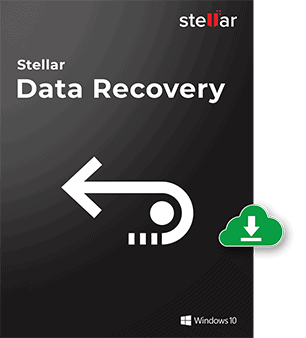Formatted Crucial SD Memory Card Photo Recovery
Formatted SD Card Recovery – Small Change, Big Consequences
A reformat is a small change with big consequences. Whether you do it to a hard drive, an SSD, or an SD card, it tends to play out in the same way. There are only a relative handful of sectors or cells on a data storage device that govern how its filesystem behaves. A partition table on the “front” of the device tells the reader how many partitions to expect. SD cards and other small devices tend to have just one partition. Each partition is further defined by a superblock, which lays out the rest of the device’s architecture.
Data Recovery Software to recover
lost or deleted data on Windows
If you’ve lost or deleted any crucial files or folders from your PC, hard disk drive, or USB drive and need to recover it instantly, try our recommended data recovery tool.
Retrieve deleted or lost documents, videos, email files, photos, and more
Restore data from PCs, laptops, HDDs, SSDs, USB drives, etc.
Recover data lost due to deletion, formatting, or corruption

This SD card used FAT32, as do many small portable storage devices, since it is compatible with just about every computer operating system and has seen wide use for 20 years. The ground rules for this partition, what its directory structure looks like, and where its files live can all be found using the data in the superblock. When the SD card was accidentally reformatted, the old partition table and superblock for its FAT32 partition were completely overwritten.
When you reformat most devices, only the parts that govern the device’s architecture change. In most cases, everything else is left alone. Reformats can cause file corruption, and any data subsequently written to the device can overwrite the old data. But for the most part, the old data tends to be intact, especially if the user was prudent enough to immediately stop using the device.
Case Study: Reformatted Crucial SD Card
In this formatted SD card recovery case study, the client lost critical files from their SD card. The photos and videos on their SD card were irreplaceable—one could say they were “crucial”. When the client had gone to transfer the files over to their computer, the computer had failed to recognize the device and prompted them to reformat it. A simple accidental keystroke was all it took to completely reformat the little 2 GB Crucial memory card. By the time the client had realized what had happened, it was too late. The client came to us for our SD card data recovery services.
Formatted SD Card Recovery Case Study: Crucial SD Memory Card
Device Manufacturer: Crucial
Device Capacity: 2 GB
Operating System: FAT32
Situation: SD card was accidentally reformatted
Type of Data Recovered: Photos and Videos
Binary Read: 99.9%
Gillware Data Recovery Case Rating: 9
In our data recovery technicians’ evaluation of the 2 GB Crucial SD card, we found a handful of bad cells on the card. SD cards do not have physical “sectors” in the same sense that hard disk drives do, since they have no platters. Inside an SD card is a small NAND chip on a circuit board, along with a controller chip. Instead of storing data on tiny sectors of a magnetic disk, NAND flash memory stores it in tiny NAND transistor cells. Essentially, the data is stored electronically, instead of magnetically. However, to the end user, flash memory devices and hard drives appear to store their data in the same way.
A few of these bad cells had prevented the client’s computer from recognizing the device. When the client accidentally reformatted the SD card, those sectors got skipped over, and the client was left with a pristine—and empty—memory card. This was not what the client had intended. But fortunately, Gillware could help.
Crucial SD Card Reformat Data Recovery – Conclusion
Because of the few bad cells, our engineers couldn’t get a full read of the SD card’s flash memory chip. We had to settle for a 99.9% read. The client’s Crucial SD card had lost some of its filesystem information due to these bad cells. The rest had been wiped out by the reformat. This had an additional effect of destroying the file directory structure on the client’s memory card.
Every file system uses a directory structure to organize itself. For example, the folders on your hard drive, which help you navigate through your files, are a part of your drive’s directory structure. Without the directory structure, files can appear to be in a jumbled and disorganized mess, or simply nonexistent.
To recover the client’s data, our data recovery technicians had to sift through the SD card’s binary data, on the prowl for common file headers. This is our last resort technique for data recovery if the directory structure is missing or heavily damaged.
The raw analysis proved fruitful, and we were able to find over 1,000 photos and videos for the client. We showed the client the results of our labor, and they were very happy to look through the recovered files. The vast majority of the client’s crucial photos and videos on their Crucial memory card had been perfectly recovered. We rated this formatted SD card recovery case a 9 on our ten-point case rating scale.
Did you accidentally reformat your SD card? Gillware can help you get your data back.

